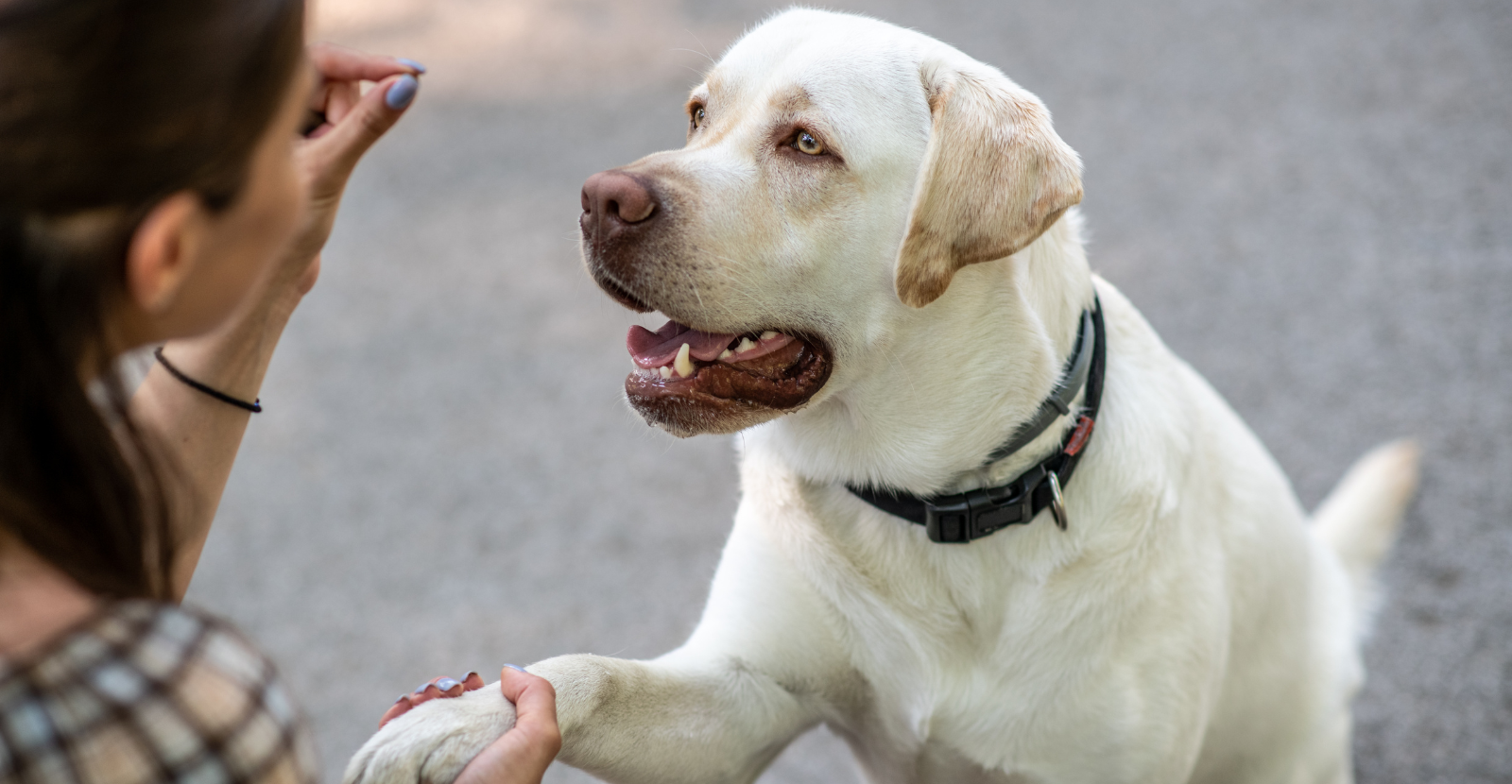September is National Service Dog Month, a time to recognize and reflect on the many roles service dogs have in our lives. Dog people know dogs through and through. Most of us have had dogs for our whole lives, and certain things are second nature when it comes to their care. We may already know the best toys, the best ways to train them, and even obscure information like managing barking habits or the best diet to keep them healthy.
What we may not know is how to manage service dogs, or dogs dealing with PTSD to help improve their quality of life after traumatic experiences. Maybe you are rescuing a dog with an unfortunate history or maybe your dog has recently suffered a traumatic experience. Read on for more information you need to know.
Signs of PTSD In Dog
We may not be aware of the reason the dog is experiencing PTSD symptoms. After all, they can’t tell us about it with words. As conscientious owners, we can look out for the following symptoms to determine if our dogs are experiencing PTSD:
- Aggressive behavior or reactions
- Anxiety or anxious behaviors
- Clinginess towards owner
- Depression
- Fear
- Hypervigilance
- Lethargy
- Panic
- Panting
- Shaking
- Sudden increase in aggression
- Timid behaviors
If your dog exhibits these behaviors and you are unsure why it is always best to consult your veterinarian to rule out any underlying physical conditions including injury and illness. Remember, some of these symptoms, such as lethargy and shaking, are also related to the pain of arthritis in dogs. However, If the vet’s diagnosis does not reveal a medical explanation, it may be indicative of PTSD.
A dog’s body language also may provide us with clues that give us information on what is triggering PTSD. Pay attention to tail tucking, pinned back ears, or crouching low to the ground. These nonverbal cues may alert us to the trigger for PTSD.
How to Overcome Your Dog’s PTSD
In order to provide the best quality of life for your dog, you’ll have to be aware of when the PTSD is triggered and take steps to manage the resulting response from your dog. Over time, we can lessen PTSD symptoms and possibly overcome the trauma. Some dogs will never fully overcome PTSD, and that’s okay, but we can do our part to make things more manageable with a thoughtful approach, attentiveness, and patience.
Identifying the Trigger
If you are adopting a dog with a history, the shelter might have insight into what has happened to the dog. Common reasons for trauma include:
- Abandonment
- Abuse
- Military or police dog work
- Natural disasters
- Victim of animal attack
- Victim of dog fighting
Identifying the trigger of the PTSD will give us an idea of what preceded the trauma, and therefore what will precede a PTSD reaction from our dog. For victims of natural disasters, thunderstorms might bring on symptoms, whereas victims of an animal attack might exhibit symptoms in the presence of other animals.
Knowing when and why the PTSD presents itself will be integral in managing the physical response.
Eliminate Triggers
Dogs are associative animals. They don’t always know what words or actions mean, but they are good at recognizing the patterns. They might learn that taking out their leash or hearing “go for a walk” means they will soon be outside exploring the neighborhood. Similarly, they may also know that when they hear yelling, abuse may follow if that is what they have become accustomed to.
Some triggers can be completely eliminated, such as yelling or displaying anger around a sensitive dog. Dogs that are anxious and fearful at dog parks do not need to be taken to dog parks. If we can identify what causes PTSD and the trigger can be removed completely, we can do that for our dogs to alleviate the stress associated with PTSD.
Systemic Desensitization
Some triggers cannot be avoided. Dogs that are fearful of cars may need to be in a car to go to the vet routinely. Those that fear loud noises like fireworks on the 4th of July or thunderstorms may still be subjected to these noises occasionally, and we will have no control to stop it from happening.
In these scenarios, behaviorists suggest “systemic desensitization” which combines light exposure therapy with standard dog training principles. Systemic desensitization involves taking small steps toward overcoming the fear and creating a positive association with the trigger.
Taking the example of the car as a trigger. Some dogs will be severely adverse to the point that they cannot even approach a car. Start by placing treats a few feet from the car. The dog will be encouraged to approach and get the treat. Do not drag them up to the car by the leash. Allow them to approach and retreat at their whim.
As they increase in confidence, you may move the treats closer to the car. You may place treats inside the car on the floor but keep the car stationary. You may eventually move the treats inside the car farther, but leave the car off and stationary while the dog enters and exits at their discretion. As their confidence improves, you may even be able to turn on the car and eventually drive it short distances with them inside.
This process can take weeks, months, or years depending on the severity of the response, and it will not be successful in all cases. Pay close attention to your dog’s cues and never force them if they are not ready.
Medication
In severe cases, dogs may not have the ability to work through the trauma and will become entirely debilitated during episodes. Consult your vet if your dog is in severe distress during episodes. Sometimes veterinarians will prescribe sedatives or anti-anxiety medication to help manage symptoms.
Always consult your vet before administering medication of any kind to your dog.
What to Do When Your Dog is Experiencing PTSD
While you are working to manage and possibly overcome PTSD, there will be episodes where your dog's fear is out in full force. We love our canine companions, and our protective instincts will likely take over when they show signs of fear and distress.
Don’t let it.
Unlike the approach we use for children, dogs should not be comforted when they are exhibiting symptoms. While we feel it communicates that everything will be okay, they read our reaction as confirmation that they should indeed be reacting with fear and panic. This reinforces the fear.
Instead, do your best to act like everything is okay. Go about your business and behave as you normally do. This signals to your dog that there is no reason to fear because you, the alpha dog in their eyes, are not afraid or cowering. If you’re okay with everything, why shouldn’t they be okay too?
Get Help
When PTSD regularly affects the quality of life for a person, it’s time to seek professional help to manage the condition and reduce its impact on daily life. The same goes for our dogs.
If we’re doing our best to help our dogs overcome the trauma but we’re coming up short, it may be time to employ the help of professional dog trainers. Try interviewing the best local trainers to see if they have had past experiences dealing with PTSD in dogs. Online dog training is an option as well.
Final Thoughts
Caring for a dog with PTSD can be challenging, but it is a selfless act that yields great rewards for both the owner and the dog. Do your best to understand their PTSD and you will help them live their best life.
Special thanks to our contributor, Brad Clarke, who wrote this article. He is also the content manager for dognerdz.com, and we are so thrilled he helped us educate on this important information. Thank you, Brad!













